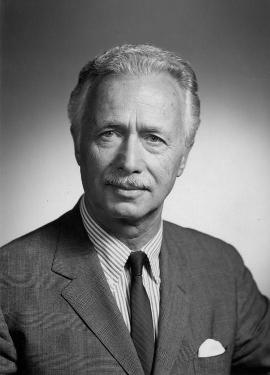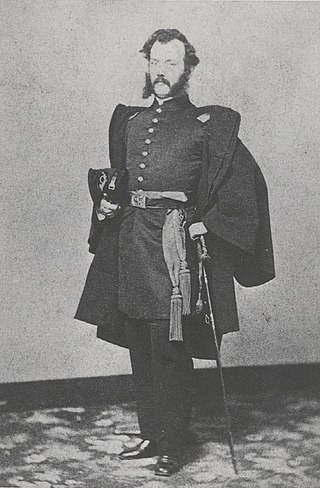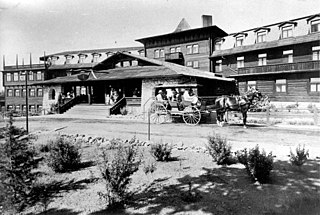Related Research Articles

Pietro Belluschi was an Italian-American architect. A leading figure in modern architecture, he was responsible for the design of over 1,000 buildings.

Bernard Ralph Maybeck was an American architect in the Arts and Crafts Movement of the early 20th century. He worked primarily in the San Francisco Bay Area, designing public buildings, including the Palace of Fine Arts in San Francisco, and also private houses, especially in Berkeley, where he lived and taught at the University of California. A number of his works are listed on the National Register of Historic Places.

The First Unitarian Church of Oakland is located in western Downtown Oakland, California. It is a member of the Unitarian Universalist Association.

John Galen Howard was an American architect and educator who began his career in New York before moving to California. He was the principal architect at several firms in both states and employed Julia Morgan early in her architectural career.

Willis Jefferson Polk was an American architect, best known for his work in San Francisco, California. For ten years, he was the West Coast representative of D.H. Burnham & Company. In 1915, Polk oversaw the architectural committee for the Panama–Pacific International Exposition (PPIE).

Alvinza Hayward was an American mine-owner, capitalist, businessman, and financier. He was a well-known gold mining millionaire who made his fortune during the California Gold Rush. He lived in the San Francisco Bay Area.

Myron Hubbard Hunt was an American architect whose numerous projects include many noted landmarks in Southern California and Evanston, Illinois. Hunt was elected a Fellow in the American Institute of Architects in 1908.

This is a list of the National Register of Historic Places listings in Alameda County, California.
The San Francisco and Alameda Railroad (SF&A) was a short-lived railroad company in the East Bay area of the San Francisco Bay Area. The railroad line opened 1864–1865 from Alameda Terminal on Alameda Island to Hayward, California, with ferry service between Alameda Terminal and San Francisco started in 1864. After being bankrupted by the 1868 Hayward earthquake, it was acquired by a subsidiary of the Central Pacific Railroad in August 1869. Part of the SF&A line between Alameda Terminal and San Leandro served as a portion of the First transcontinental railroad starting in September 1869, while the southern section was abandoned in 1873.

James W. McLaughlin was a Cincinnati, Ohio architect. He studied to be an architect working under famed James Keys Wilson. He fought in the American Civil War serving in the Union Army. During the late 19th century, he became a popular builder in Cincinnati. In 1870 he helped organize the Cincinnati chapter of the American Institute of Architects; that year, he was selected as a Fellow of the AIA, serving on its board.

Hartwell and Richardson was a Boston, Massachusetts architectural firm established in 1881, by Henry Walker Hartwell (1833–1919) and William Cummings Richardson (1854–1935). The firm contributed significantly to the current building stock and architecture of the greater Boston area. Many of its buildings are listed on the National Register of Historic Places.

Charles Frederick Whittlesey (1867–1941) was an American architect best known for his work in the American southwest, and for pioneering work in reinforced concrete in California.

William F. Curlett and Alexander Edward Curlett were a father-and-son pair of architects. They worked together as partners under the name of William Curlett and Son, Architects from c. 1908–1916. Aleck Curlett partnered with Claud Beelman as Curlett & Beelman (1919–1932).

The Unitarian Universalist Church of Berkeley (UUCB) was founded as the First Unitarian Church of Berkeley in Berkeley, California in 1891 and moved to Kensington, California in 1961. It is one of the oldest and largest Unitarian Universalist churches on the West Coast and has had many distinguished members, including numerous professors at the University of California, Berkeley. It is highly regarded for its music program as well as its series of renowned ministers and its many avenues for spiritual growth, learning, and social action.
John H. Christie (1878–1960) was an American architect who worked for the Southern Pacific Railroad, and was the railroad's chief architect from 1924 to 1947.
Samuel Newsom was a Canadian-born American architect. Together with his brother Joseph Cather Newsom founded the architecture firm Newsom and Newsom, practicing in Northern and Southern California. Their most celebrated house is the Carson Mansion in Eureka, California.

The First Unitarian Church is a church structure built in 1889 and is located at 1187 Franklin Street at Geary Street in the Cathedral Hill neighborhood, San Francisco, California. It is also known the First Unitarian Universalist Church, and is nicknamed "Starr King's church".

The Beezer Brothers were American architects active from the late 19th-century to the Great Depression. They were twins, who practiced together in western Pennsylvania before moving to Seattle, Washington in 1907 to participate in the city's rapid growth brought on by the Klondike Gold Rush. Best known for the many Catholic churches they designed, they also worked on domestic residences and municipal buildings. Their work on the west coast, while concentrated in Seattle, can be found from Los Angeles to San Francisco to Alaska, and inland to Montana. At least one church and two buildings are individually listed on the National Register of Historic Places, and several other buildings are contributing properties to several different National Historic Districts.

Alameda City Hall is a historic city hall civic building in Alameda, California. The building has been continually used since it was first built in 1895. It has a historical marker erected in 1998 by the Native Sons of the Golden West; and is listed as one of the National Register of Historic Places since 1980.
References
- 1 2 3 4 5 6 7 "Percy & Hamilton Partnership (1880–1899)". Noehill.com.
- 1 2 Michelson, Alan. "1st Unitarian Church #3, Western Addition, San Francisco, CA (1889)". Pacific Coast Architecture Database (PCAD). Built Environments Library, University of Washington.
- ↑ Keraghosian, Greg (May 23, 2021). "How notorious tycoon William Sharon left SF's children a still-popular landmark". SFGATE . Retrieved 15 September 2024.
- ↑ Olmsted, Frederick Law (January 20, 2015). The Papers of Frederick Law Olmsted: The Last Great Projects, 1890–1895. JHU Press. p. 316. ISBN 978-1-4214-1603-8.
- 1 2 "National Register of Historic Places Inventory/Nomination: Alameda City Hall". National Park Service . Retrieved September 19, 2023. With accompanying pictures